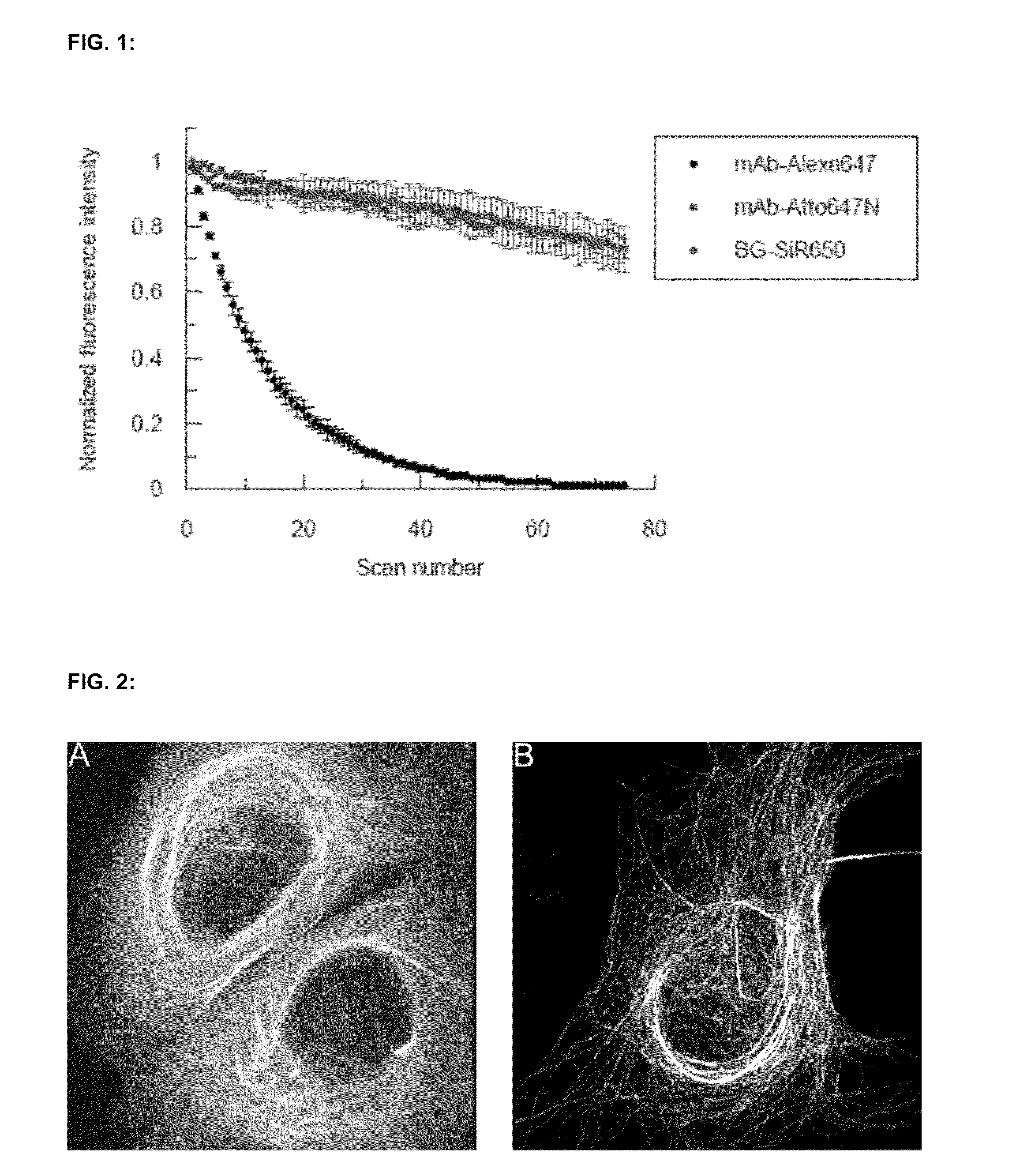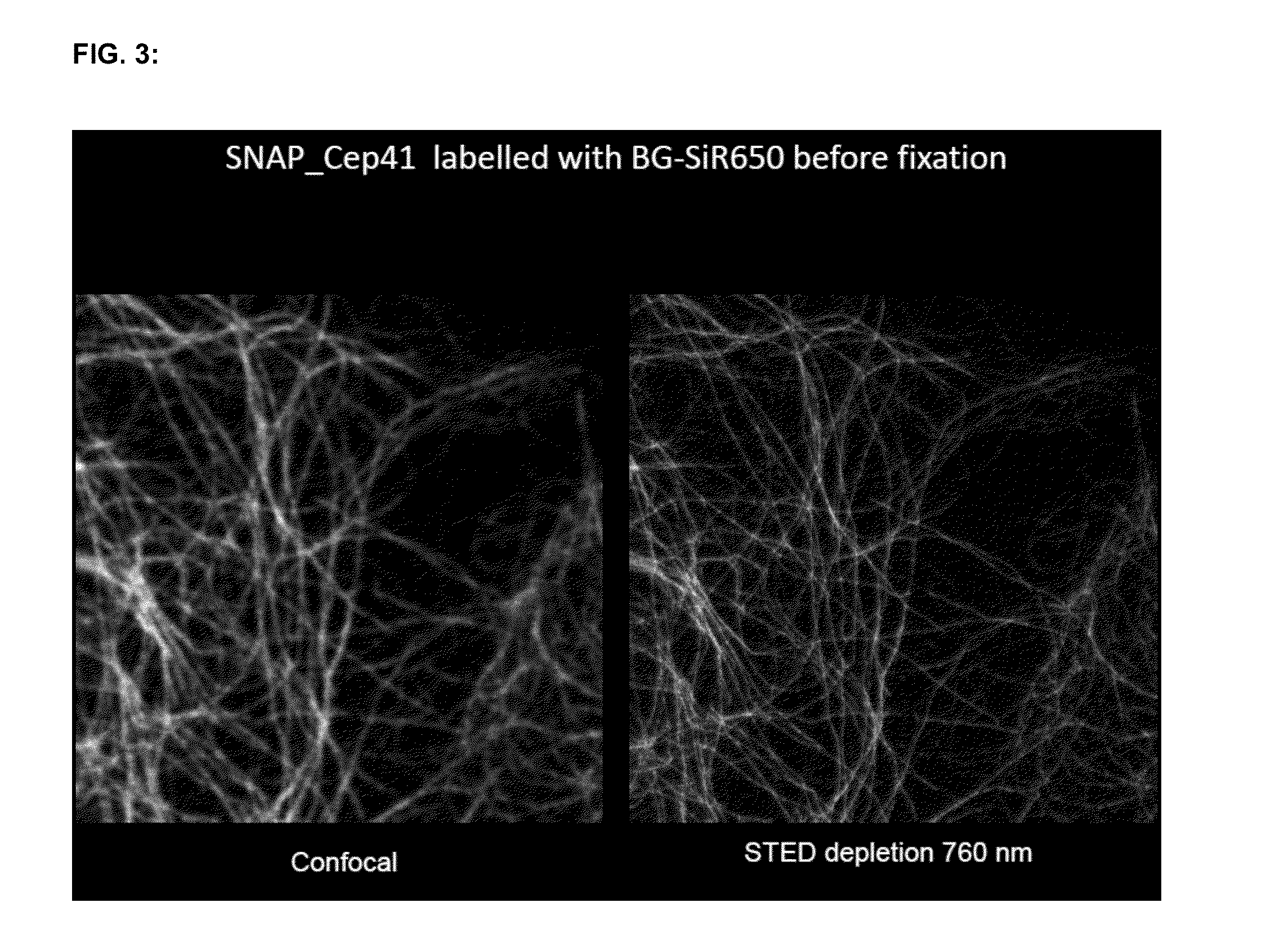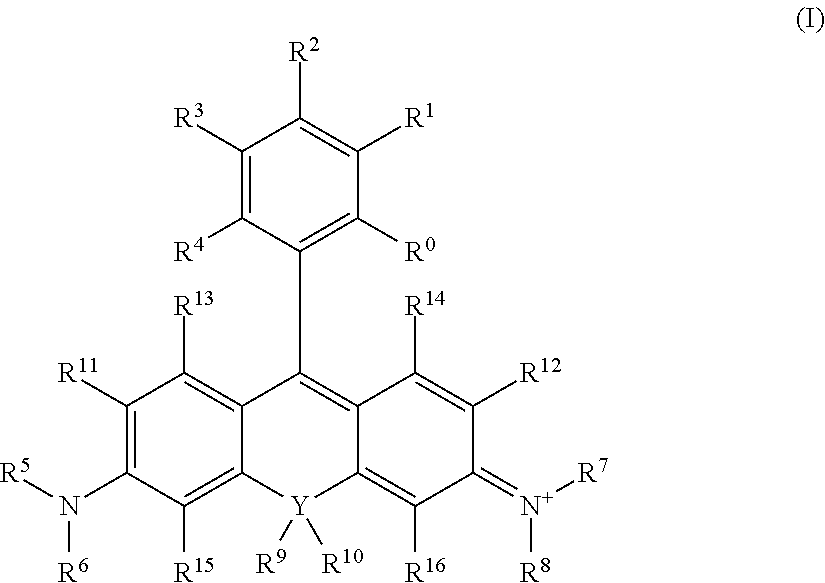Cell permeable, fluorescent dye
a technology of fluorescent dye and permeable cells, applied in the field of cell permeable and fluorescent dye, to achieve the effect of increasing the permeability of the membran
- Summary
- Abstract
- Description
- Claims
- Application Information
AI Technical Summary
Problems solved by technology
Method used
Image
Examples
Embodiment Construction
[0017]In general terms, the invention pertains to a compound of formula
[0018]
or its corresponding spirolactone
[0019]
wherein:[0020]Y is chosen from the group consisting of Si, Ge and Sn;[0021]R1, R2, R3, R4, R5, R6, R20 and R21 are independently any kind of substituents;[0022]A is NR8R9, wherein R8 and R9 are independently any kind of substituents;[0023]B is O or N+R18R19, wherein R18 and R19 are independently any kind of substituents;[0024]C is NR18R19;
[0025]R10 of (I) has the substructure
[0026][0027]wherein[0028]one of R12 or R16 or both is / are independently a carboxylic acid or a salt of a carboxylic acid; and[0029]R13, R14, R15 and optionally one of R12 or R16 are independently any kind of substituents;[0030]either R12 or R16 of R10 in combination with R11 of (II) forms a γ-spirolactone, such that R12 of R10 in combination with R11 of (II) forms the γ-spirolactone (IIa):
[0031][0032]or, alternatively, R16 of R10 in combination with R11 of (II) forms the
[0033]
spirolactone (IIb):
[00...
PUM
| Property | Measurement | Unit |
|---|---|---|
| wavelengths | aaaaa | aaaaa |
| excitation and emission wavelengths | aaaaa | aaaaa |
| chemical shifts | aaaaa | aaaaa |
Abstract
Description
Claims
Application Information
 Login to View More
Login to View More - R&D
- Intellectual Property
- Life Sciences
- Materials
- Tech Scout
- Unparalleled Data Quality
- Higher Quality Content
- 60% Fewer Hallucinations
Browse by: Latest US Patents, China's latest patents, Technical Efficacy Thesaurus, Application Domain, Technology Topic, Popular Technical Reports.
© 2025 PatSnap. All rights reserved.Legal|Privacy policy|Modern Slavery Act Transparency Statement|Sitemap|About US| Contact US: help@patsnap.com



